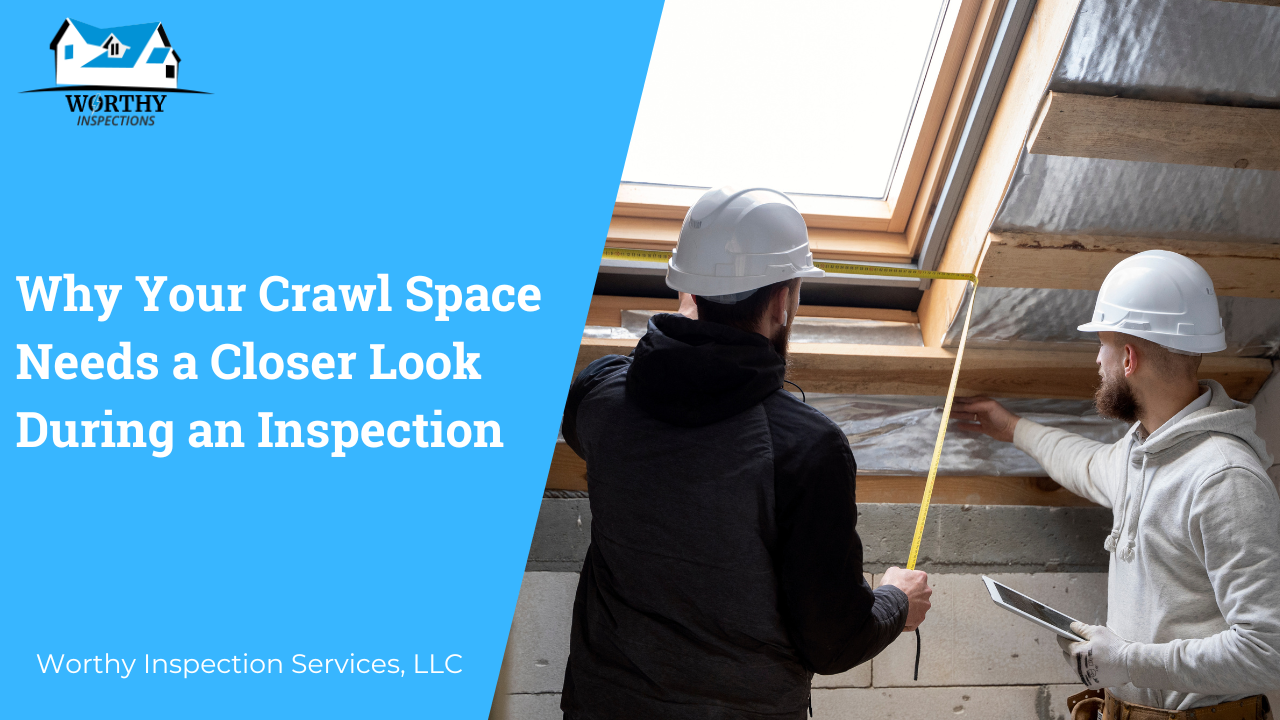Most homeowners rarely give much thought to what lies beneath their floors, until a problem arises.
The crawl space, often overlooked and under-inspected, plays a significant role in your home’s structural integrity, indoor air quality, and energy efficiency. Yet it’s one of the most commonly neglected areas during routine maintenance and even during home inspections.
See why a closer look beneath your home could reveal hidden problems that impact comfort, safety, and resale value.
Understanding the Crawl Space: What It Is and Why It Matters
A crawl space is the shallow area between the ground and the first floor of your home. Typically ranging from one to three feet in height, it provides access to critical systems such as plumbing, electrical wiring, and HVAC ducts.
Crawl spaces serve three primary functions:
- Ventilation: They help regulate air circulation beneath the house.
- Utility Access: They allow for easier servicing of systems like piping or ductwork.
- Thermal Buffer: They offer some insulation from the ground below.
There are two main types of crawl spaces:
- Vented: These allow for air exchange with the outside, typically through foundation vents.
- Unvented (Encapsulated): These are sealed off and often equipped with vapor barriers and dehumidifiers to control moisture and temperature.
Because crawl spaces are not part of daily living areas, they’re easy to forget, until warning signs start to emerge elsewhere in the home.
Common Crawl Space Issues Identified During Inspections
When a professional inspector evaluates a crawl space, several recurring problems often surface:
Moisture Buildup and Water Intrusion
Water can enter the crawl space due to poor drainage, heavy rains, plumbing leaks, or high groundwater levels. Moisture in crawl space environments leads to long-term damage if not addressed promptly.
Mold and Mildew
Excess humidity provides ideal conditions for mold and mildew to thrive. This not only weakens structural materials but can also affect indoor air quality, especially since up to 50% of the air inside a home can originate from the crawl space.
Pest Infestations
Rodents, termites, and insects are commonly found in neglected crawl spaces. Their presence can lead to damage to wood structures, insulation, and wiring.
Structural Damage
Rotted beams, deteriorated supports, and sagging joists are all potential hazards. Over time, this damage can compromise the structural integrity of the home.
Insulation Deficiencies and Air Leaks
Improperly installed or deteriorated insulation, along with unsealed gaps, can result in heat loss, drafts, and increased energy bills.
Warning Signs That Crawl Space Issues May Already Be Present
While you may not frequently access your crawl space, your home may be signaling that something is wrong. Watch for these indicators:
- Persistent musty odors indoors
- Uneven or sagging floors
- High indoor humidity, especially in warmer months
- Allergy-like symptoms such as coughing, sneezing, or wheezing
- Rising utility bills without clear explanation
These symptoms often originate from poor crawl space conditions, and addressing them early can prevent more extensive and costly repairs.
The Importance of Crawl Space Inspections for Buyers and Sellers
For Buyers
A thorough inspection, including the crawl space, ensures there are no hidden issues like moisture damage, pest infestations, or structural weaknesses. Skipping this step can lead to unforeseen repair costs after closing.
For Sellers
Unresolved crawl space issues may result in inspection delays, buyer hesitation, or price negotiations. Addressing problems before listing can streamline the sale process and increase buyer confidence.
For Current Homeowners
Even if you're not currently buying or selling, routine crawl space inspections help catch potential issues early, before they evolve into expensive repairs or health hazards.
What Inspectors Evaluate During a Crawl Space Assessment
A professional crawl space inspection typically includes:
- Moisture levels and drainage patterns
- Presence of standing water, leaks, or condensation
- Evidence of mold or mildew growth
- Signs of pest or rodent activity
- Condition of floor joists, beams, and support structures
- State of insulation and ventilation systems
- Integrity of vapor barriers or encapsulation systems
Each of these components contributes to the overall health and functionality of the crawl space and by extension, your home.
Preventive Measures to Maintain a Healthy Crawl Space
To reduce the risk of damage and maintain crawl space integrity, consider the following:
- Install a vapor barrier or fully encapsulate the space to control moisture
- Ensure proper grading and drainage around your home’s foundation
- Inspect for leaks regularly, especially after storms or plumbing work
- Use a dehumidifier if your home is in a humid climate
- Schedule professional crawl space inspections annually
Preventive maintenance not only protects your property but also contributes to improved indoor air quality and energy efficiency.
Don’t Overlook What Lies Beneath!
The crawl space may not be the most visible part of your home, but it plays a vital role in maintaining structural stability, indoor comfort, and long-term property value. Ignoring it during a home inspection or failing to maintain it can lead to costly and avoidable problems.
A comprehensive inspection that includes the crawl space is essential for anyone buying, selling, or maintaining a home. It’s a small area with a big impact.
Ensure Your Home’s Health and Safety with Worthy Inspection Services
Protect your home from hidden damage with Worthy Inspection Services. Our expert crawl space inspections detect moisture, pests, and structural issues before they escalate into costly repairs. Gain peace of mind knowing your home is safe, sound, and well-maintained.
Book your inspection today!



Be the first to post a comment